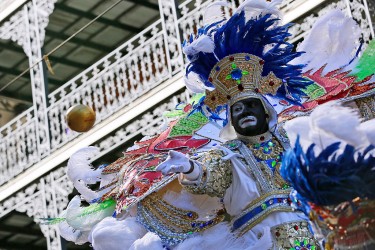The Sicilian merchants who first brought the citrus trade to America ultimately dominated all of the wholesale fruit business in the nation, and before 1850, the number of Sicilians in New Orleans kept pace with the number in New York. They established trading houses along Decatur Street and in the rapidly Italianizing French Quarter. They diversified the goods they handled—selling locally grown citrus, Midwestern apples and pears, and imports like Smyrna figs and (as they spelled the fruit then) Honduran cocoanuts, yet lemons always remained crucial. As late as 1884, lemons represented New Orleans’ third most valuable imported commodity, behind only coffee and sugar.
The ships also brought people: Most Sicilian immigrants to the U.S. came on ships operated by the Mediterranean citrus fleet. When the transatlantic citrus fleet modernized in the late 1870s, the voyage time between Palermo and New Orleans to was slashed to just 29 days—and the same Sicilian tycoons who had dominated the nation’s fruit business emerged as padrones, labor agents who contracted passengers to work in the Gulf South and elsewhere in exchange for Atlantic passage. Agents crisscrossed Sicily seeking workers for New Orleans. Once they got there, these new immigrants, for the first time, met countrymen who for generations had lived only a mountain range away. The city’s French Market soon resonated with the island’s obscure Italian, Greek, and Albanian dialects. Through the lemon trade, the city of New Orleans became a crucible in which people forged an ethnic identity—“Sicilian”—out of what were really disparate cultural traditions.
Many were farmers, laborers, and produce peddlers, but to be Sicilian in New Orleans did not necessarily mean remaining poor and unassimilated. Some Sicilians belonged to the Southern Yacht Club, a prestigious association founded by the city’s elite in 1849, including two restaurateurs who even sponsored trophies for annual regattas. Indeed, by the middle of the 1890s, the Italian names of the well-to-do merchants began appearing next to notable Gallic and Anglo-Saxon ones in the social pages of newspapers. The Sicilians were notable for how quickly they were joining New Orleans’ culture, and the legal fortunes they were amassing were overshadowing those of their neighbors.
Even as a flood of immigrants arrived with the citrus harvest every fall, New Orleans’ Sicilian merchant class set its sights on greater fortunes, branching into the shipment and sale of bananas after the advent of refrigeration in the 1890s. In doing so, they revealed a willingness to take a risk on something new, a vision and dynamism unusual in a city already known for its complacency towards innovation.












